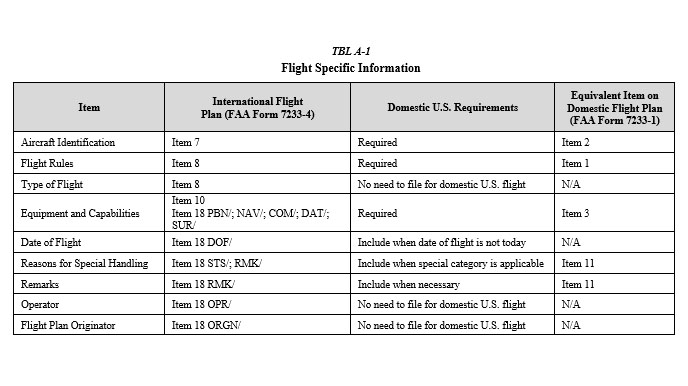Mandatory ICAO flight plan filing back on track
Attention pilots: Two years after the FAA placed a hold on plans to require all domestic and international flight plan filers to use the international flight plan form, the policy has been revived with a start date of Aug. 27.

The resumption of the long-delayed mandate to adopt the flight plan form, which uses the International Civil Aviation Organization (ICAO) format, comes after the FAA conducted extensive compatibility testing, said Rune Duke, AOPA’s senior director of airspace, air traffic and security.
Many flights must already use the ICAO format flight plan, which according to the FAA is required now in the following circumstances:
- When the flight will enter international airspace, including oceanic airspace controlled by FAA facilities.
- When the flight expects routing or separation based on Performance Based Navigation (PBN), for example, RNAV 1.
- When the flight will enter Reduced Vertical Separation Minimum (RVSM) airspace.
- When the flight expects services based on Automatic Dependent Surveillance-Broadcast.
Guidance on using the ICAO flight plan form eventually will be published in the Aeronautical information Manual. In the interim, the FAA has posted guidance on its website including a “What’s different?" summary comparing the domestic flight plan form that’s familiar to most U.S. pilots, and the ICAO form (FAA Form 7233-4). The detailed discussion of the ICAO flight plan form that will appear in the AIM as an appendix has been posted to the FAA website as a draft document.
AOPA has produced a video that reviews the ICAO flight plan form, and AOPA’s Pilot Information Center can answer your questions about it.
Leidos Flight Service has made several enhancements to its pilot website including a new mobile website designed with the ICAO format in mind. Leidos also has posted an informational video. See also this additional web-based guidance.
Changing the flight plan format is expected to help Flight Service keep one of its most basic functions operating efficiently as the airspace system undergoes its satellite-based-navigation technological transition, and equipment aboard aircraft follows suit.
“Flight Service has been working with our vendors over the last two years to ensure that the transition to the international format for civil flight planning is seamless and provides the necessary tools for the pilot community to leverage the features available with NextGen technologies,” Flight Service Director Steven Villanueva told AOPA.
In an article in its July/August publication FAA Safety Briefing, the agency said improvements over the domestic form include increasing the size of the departure and destination fields to accommodate a greater variety of entry types, including Special Flight Rules Area flight plans; wake turbulence categories for aircraft; and transmitting the information in the form’s supplemental pilot data field—pilot contact information and VFR flight plan information—to the destination “to reduce search and rescue response times.”
“Don’t wait until use is mandatory; you can use the international format now,” it added.



